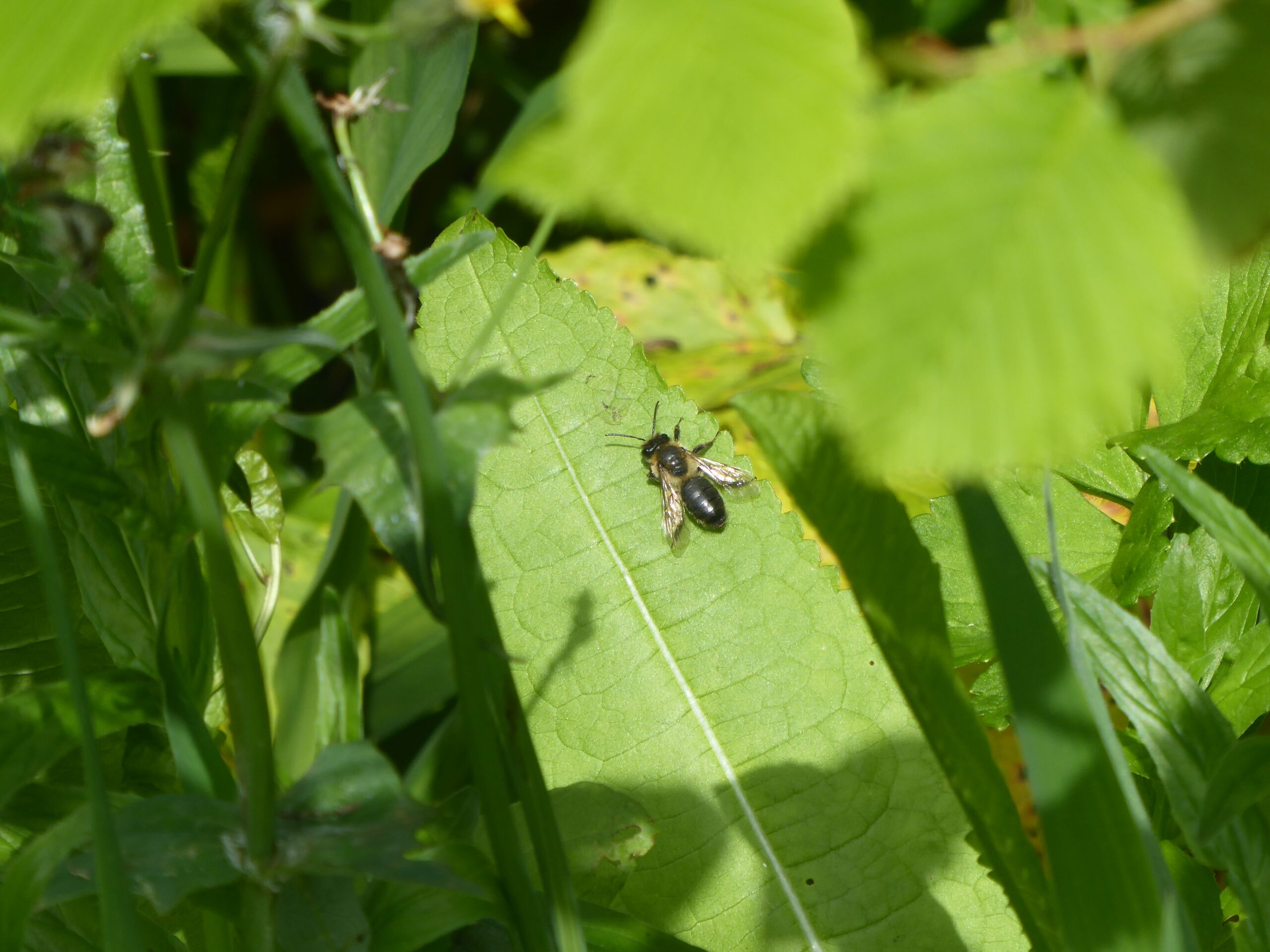Two days ago I spotted Marsham’s Nomad Bee, which preys upon mining bees, especially the Chocolate Mining Bee. Then yesterday, I noticed this bee in Vole County. It is, in fact, the chocolate mining bee and is usually found in sandy soils, parks, gardens and woodland, between mid-March to mid-June. Females nest singly but may share a burrow entrance. They forage on many different spring-blossoming shrubs, trees and low-growing flowers including buttercups and willows.
The larvae of Marsham’s nomad bee attach themselves to bees when they land on flowers and are then flown right into the mining bee’s cell where the consume the contents, including the eggs of the mining bee.


